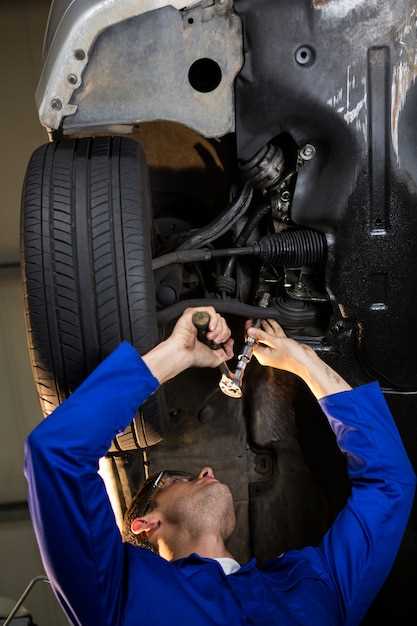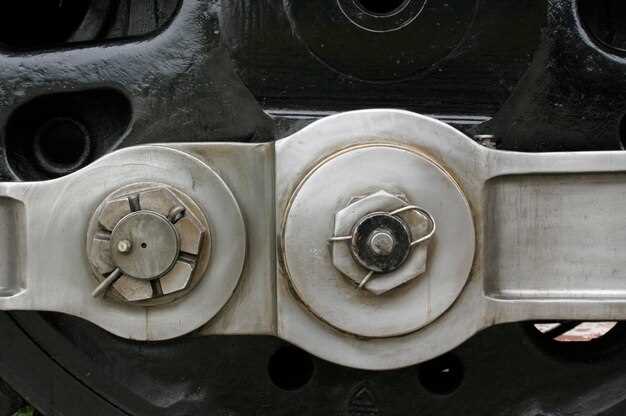
The suspension system of your Toyota plays a critical role in ensuring a smooth ride and maintaining vehicle stability. Over time, various components of the suspension can wear out due to everyday use, road conditions, and driving habits. It is essential for vehicle owners to be able to identify worn-out suspension parts to prevent further damage and maintain safety on the road.
Common symptoms of worn-out suspension parts include excessive bouncing, steering issues, and uneven tire wear. Feeling your vehicle sway during turns or facing difficulties while braking can also indicate that the suspension system is in need of attention. Being observant and proactive about these signs will help you address suspension problems early, potentially saving you both time and money on repairs.
In this guide, we will explore the key signs and methods for identifying worn-out suspension components in your Toyota. We’ll focus on components like shocks, struts, and control arms, providing you with the knowledge necessary to assess the condition of your vehicle’s suspension with confidence. By understanding these indicators, you can ensure your Toyota remains in optimal driving condition for years to come.
Visual Signs of Suspension Wear in Toyota Vehicles

Identifying worn-out suspension parts early can save you from costly repairs and ensure a smoother ride. Here are some visual signs that indicate suspension wear in Toyota vehicles.
1. Uneven Tire Wear: One of the most prominent visual indicators of suspension issues is uneven tire wear. If you notice bald spots or excessive wear on one side of the tire, it may signal that suspension components, such as bushings or control arms, are failing to maintain proper alignment.
2. Sagging or Crooked Vehicle Stance: A noticeable sag in one corner of the vehicle or an overall crooked appearance while parked can point to worn springs or struts. This uneven stance not only impacts aesthetics but also disrupts handling stability.
3. Visible Cracks and Damage: Inspect the suspension components, such as control arms, bushings, and strut mounts for cracks, tears, or other visible damage. Any signs of deterioration can indicate that a replacement is necessary to ensure proper suspension function.
4. Leaking Fluid: Shocks and struts are typically filled with fluid for damping. If you spot any oily residue around the shocks or struts, this may signify a leak, indicating the need for replacement to maintain suspension effectiveness.
5. Noise During Movement: While not a direct visual sign, observing physical reactions to noise can provide context. If you notice the vehicle bouncing excessively or hearing clunking sounds when driving over bumps, it may relate to worn suspension parts that exhibit movement signs without proper damping.
Regular inspection of these visual signs can help maintain the safety and performance of your Toyota vehicle’s suspension system, ensuring a comfortable driving experience.
Key Symptoms Indicating Suspension Component Failure

Identifying worn-out suspension components is crucial for maintaining vehicle safety and performance. Several key symptoms can indicate potential failure of these parts, warranting thorough inspection.
One of the primary signs is excessive bouncing or swaying while driving, particularly after hitting bumps or potholes. This occurs when shock absorbers or struts lose their ability to dampen motion effectively.
Another symptom is uneven tire wear, which can result from misaligned or damaged suspension components. Inspecting the tires for bald spots or uneven tread patterns is essential, as this can lead to a decrease in handling and stability.
Unusual noises, such as clunking, rattling, or squeaking sounds while driving over rough surfaces, may indicate that bushings, mounts, or joints are worn out. Regular inspection of these components can help identify the issue before it escalates.
Additionally, if the vehicle experiences difficulty in maintaining a straight line, requiring constant adjustment of the steering wheel, this could suggest an issue with the suspension alignment. An inspection by a qualified technician can confirm whether the suspension system is functioning correctly.
Lastly, a noticeable dip in the front or rear of the vehicle when accelerating or braking is another warning sign. This symptom may indicate worn shocks or struts, affecting the overall balance and handling of the vehicle. Regular inspections can help catch these issues early and ensure a safe driving experience.
Steps for Conducting a Thorough Suspension Inspection
To ensure the longevity and performance of your Toyota’s suspension system, it is essential to conduct a thorough inspection regularly. Begin by checking the vehicle’s stance; look for any uneven height which could indicate a problem with the springs or struts.
Next, while the vehicle is on a flat surface, push down on each corner of the car to observe the rebound of the suspension. If the vehicle continues to bounce more than once or twice, this suggests worn shocks or struts needing replacement.
Proceed by examining the bushings, which connect various suspension components. Look for signs of cracking, tearing, or excessive play, as these can compromise the integrity of the suspension system.
Inspect control arms and ball joints for any signs of wear. Check for looseness by performing a visual inspection and manually moving these components to detect any play or noise that might indicate damage.
Don’t forget to examine the tie rods and steering linkages. These parts should be free from corrosion and wear. Look for cracks in the rubber boots, as well as any leaks around these components.
Finally, take a look at the alignment of the wheels. Uneven tire wear, pulling to one side while driving, or vibrations can signal suspension problems that need further investigation. A proper alignment check should be conducted post-inspection if any issues are found.




